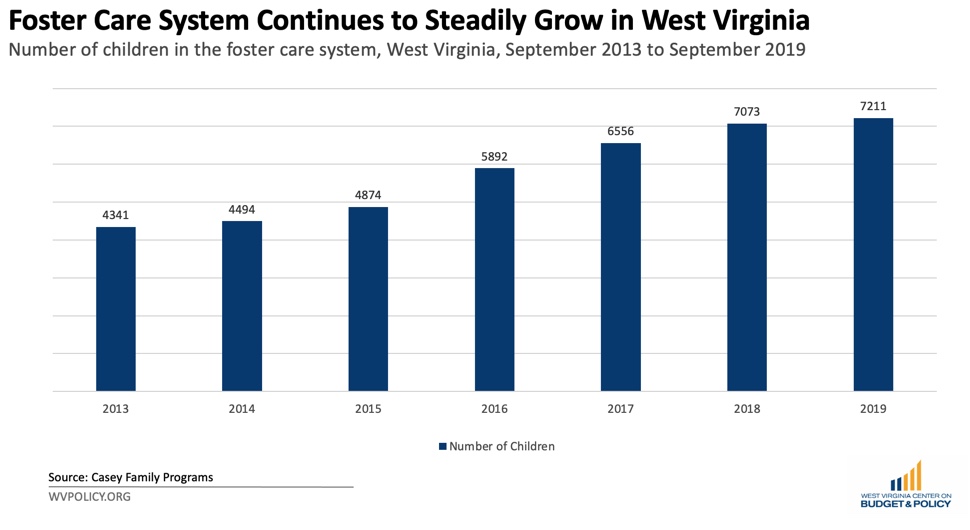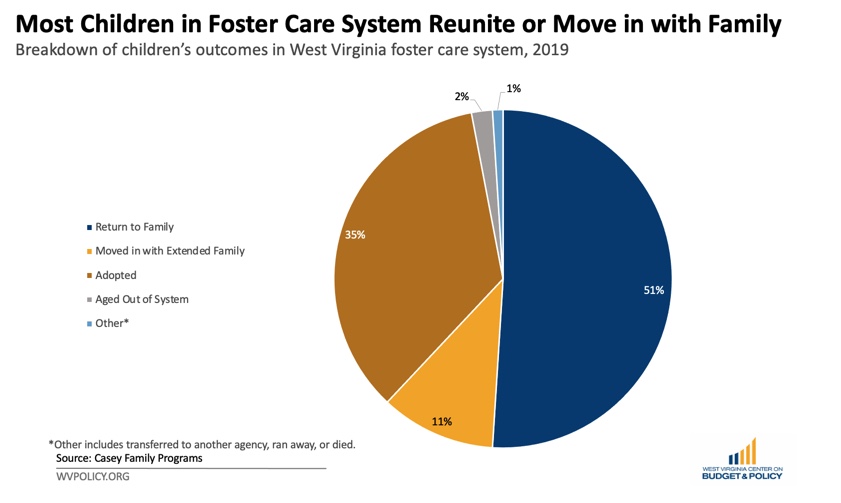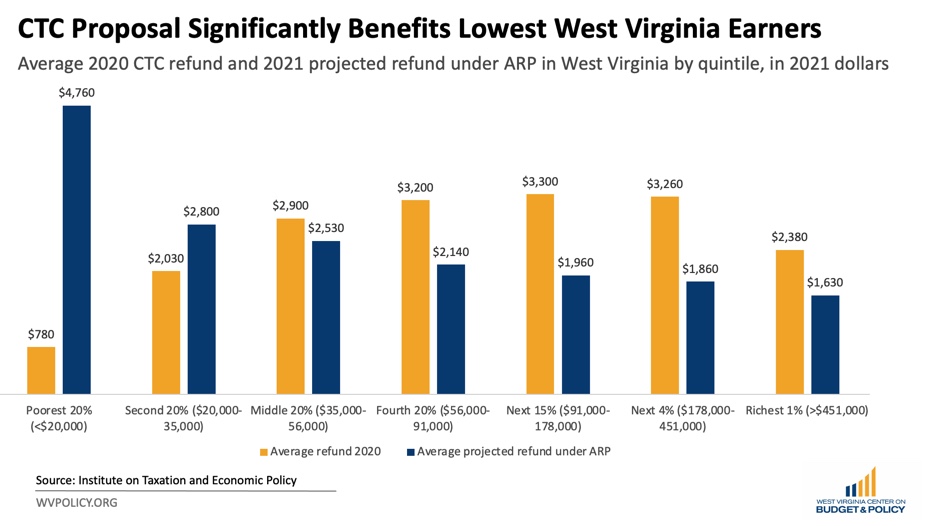May is National Foster Care Month. Federally recognized since 1988, National Foster Care Month recognizes the 463,000 children and youth in the foster care system across the country, as well as their caretakers and families, policymakers, and the countless individuals who coalesce to support them. West Virginia has been one of the leading states in the number of children in the foster care system per capita for the past several years. Such statistics make advocacy around both the foster care system and ensuring that as many children as possible can remain in their homes of utmost importance. Several policies, such as paid family leave and expanding the enhanced child tax credit, can have tremendous impacts on child welfare and well-being in West Virginia.
In 2018, the federal government invested about $55 million in West Virginia’s foster care system, nearly $4 million of which went toward preventive services. In 2019, about 53,500 kids were part of investigations around maltreatment and welfare. Of those children, 12,400 received support services connected with the investigations. These services include the Children’s Health Insurance Program (CHIP), Medicaid, Supplemental Nutrition Assistance (SNAP), and other services that provided necessary and sometimes otherwise inaccessible interventions that promote child and family welfare. These interventions attempt to prevent more children from fully entering the state foster care system.
Despite these mitigations, nearly 5,000 children entered West Virginia’s foster care system in 2019. This figure brought the total to about 7,200 kids. But while many kids enter the system every year, many of them also leave it. According to Casey Family Programs, 95 percent of children across the state do not “experience a repeat occurrence of maltreatment within six months,” contributing to the ostensibly suppressed growth of the system relative to the number of children reported to be entering. In other words, there is a high turnover rate in West Virginia’s foster care system.

Indeed, most children who leave the foster care system in West Virginia return home to their families or live with extended families. Another one-third of kids exit the system to adoption, while two percent aged out altogether.

Several factors drive the number of children interacting with the foster care system. The Children’s Defense Fund found that poverty is a leading factor because meeting basic needs—such as health care, food, and housing—is often difficult for low-income families. Further — and of particular relevance to West Virginia — researchers have noted that the ongoing opioid crisis has also driven the national uptick in children sent to foster care over the past several years. Indeed, West Virginia, which lies at the heart of the crisis, currently has the highest number of children in the foster care system per capita. In addition, as of 2019, West Virginia had the fourth-highest poverty rate in the United States and was in the top ten for children in poverty. The pandemic has only increased these statistics and the strain on families.
Though systems often conflate poverty with negligence, the root of the issue is that families simply do not have access to the material goods and resources necessary for adequate child welfare. Several policies can help alleviate these hardships on families and their children, both directly and indirectly. These policies each have implications for the current system and prevent kids from entering the foster care system in the future.
One such policy is enhancing paid family and medical leave. Currently, the federal Family Medical Leave Act provides up to 12 unpaid, job-protected weeks annually to some workers. However, its provisions leave many people out — most recent data highlights that nationally, 84 percent of workers in the private sector do not have access to paid leave at all. What’s more, many families cannot afford to temporarily leave the workforce without pay, making this policy an inadequate means of responding to individual, familial, and community needs. But enhancing paid family leave, as detailed in the American Families Plan (AFP), could help West Virginians and families across the country. It would make paid leave accessible to many more families by ensuring that individuals receive at least partial wage replacements. Parents could take time off work to provide necessary care for their children. They could also use the program to spend time with newly adopted children.
Another policy that could help alleviate the strain on families and keep children out of the foster care system is extending the enhanced child tax credit (CTC). As part of the American Rescue Plan (ARP), the federal government increased the CTC from $1,400 to $3,600 for children under six and $3,000 for older children. This policy reduces national child poverty rates by 40 percent and will benefit 400,000 kids in West Virginia, including many in the state foster care system. The poorest 20 percent of families with children will receive six times more than under the pre-pandemic CTC. With monthly installments rolling out starting in July, this policy meaningfully addresses the conditions that often pull children into the foster care system.

Despite its robust implications for children across the country, the enhanced child tax credit is currently temporary. Both on the federal and state level, it is critical that lawmakers continue to advocate for this enhanced credit after its sunset this year.
Lastly, and most generally, supporting the foster care system and families with children requires that lawmakers support robust enhancements to the social safety net. Whether it is reversing harmful changes to cash assistance and harm reduction programs or increasing access to nutrition, enhancing proactive measures both within and outside the foster care system can further reduce the number of children interacting with the system. Given how tied the system is to poverty and other hardships, bolstering the range of services available and helping people access them more easily can provide support for the foster care system. Furthermore, improving the social safety net system for kids already in the system can help ensure better long-term outcomes.
The foster care system has made a tremendous impact on thousands of kids across West Virginia and nationally. As the country commemorates the incredible contributions that people throughout the foster care system have made, it must also continue to provide supports for the children who interact with child welfare and those who care for them.
If you have a story about how paid leave has helped your family, please click here to share it with us! Many thanks to all the parents, caretakers, and advocates who support the foster care system—both within West Virginia and across the country.